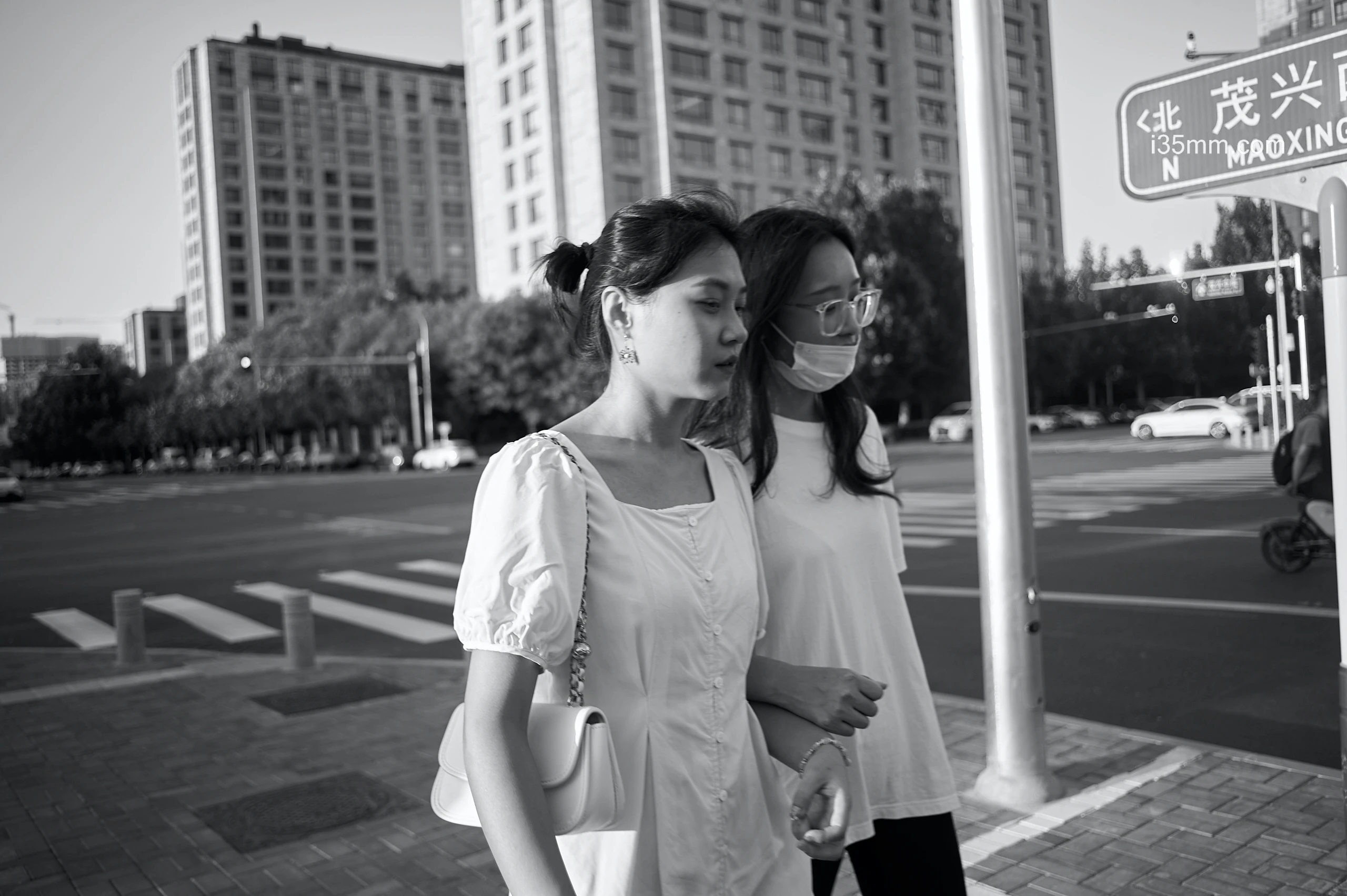If photography is a poem, is it composed of thoughts, or scenes, or both? This is a question that we can only answer by looking at photography itself.

If photography is a poem, is it composed of thoughts, or scenes, or both? This is a question that we can only answer by looking at photography itself.

The sound of a shutter recording the traces of a time when our fellow humans had been here before. I think photo excavation is going to be one of the most important jobs for archaeologists in the future of mankind!

Life was a little worried that I might get bored, so I met the camera, and them in the camera, and you in front of the screen.

The last Kodak train made its way to the station, carrying with it the CCD of the M9. It was a sad day when the last Kodak train took away the CCD of the M9. But it couldn’t be kept, nor could it be saved. Leica has entered the exciting, mature CMOS era! Youth will eventually say goodbye, but it’s a bittersweet moment. Farewell, youth! As you slowly fade away, your pure happiness stings memories.

In 2009, Leica released the M9, and it was a game-changer! Just think of all the people who dream of having one! The world’s first full-frame rangefinder digital camera! Just imagine holding such a camera, like Henri Cartier-Bresson, wandering the streets. How many fantasies could it evoke?
Just how many people only discovered this amazing brand thanks to the incredible Leica M9? At that time, it was the most impressive 135 full-frame digital camera on the market. Just one look at you with this camera around your neck and you’d be the center of attention wherever you went!
How many people have tried different settings in Photoshop, trying to get their Canon or Sony colors to match Leica? They usually end up failing, not because of Photoshop, but because they’re impatient.

The viewfinder frame of the M9 is physically lit, just like the film M cameras. Film users will feel comfortable looking at the front face of the M9, while the bald front face of the M240 and M10 may feel a bit awkward. In addition, the M-E and M240, which were introduced after the Leica M9, lack the preview lever, making them look less classic in appearance. Therefore, when looking back at the M9, its classic elements appear more dazzling. Nowadays, the M10 also lacks the light window, and Leica designers realized this. If we continue to simplify it like this, can we still call it a Leica? Therefore, Leica M10 quickly introduced the most classic rewind knob of the M3, making it into an ISO dial. In order to maintain its classic elements, it can be said that they put in a lot of effort.
Leica users are interesting. On one hand, they say that Leica is becoming less and less classic, but on the other hand, they look forward to seeing what new products Leica will release slowly. This shows that Leica M has always had some kind of tacit understanding with its users, which can only be explained by mysticism. But in any case, it is now a consensus that there is no light window after the M9. From today on, the Leica M9 is officially classified as a classic camera!

APS-H and full-frame are the differences in film size, but in terms of operation, the M8 and M9 are basically the same. Once you get used to the M8 and M9, it might feel a bit strange to switch to the M240 and M10 in terms of settings. The menus on the M8 and M9 are pretty simple, which makes them seem easier to use.

I think film is better than digital. It has more character. No matter what data you use to prove the high pixels and accurate colors of digital, it can never replace the premium texture of film. I think it’s fair to say that the color of the Leica M9 is pretty close to film. In fact, I’d go as far as to say that’s the biggest compliment you can pay the M9.
The CCD from Kodak gives the Leica M9 a special texture, of course, when paired with Leica lenses. Many people switched from CCD to CMOS, but still missed the color and texture of the M9. The solid blue, the pure red, and the greenish tone throughout the photo—they always give you some unexpected surprises. That’s the characteristic of film, right?
Don’t get me wrong, the CCD of the M9 is an amazing piece of technology. Some people can even process a CMOS photo to have a CCD-like texture, it just takes some time. And the color of Leica’s CMOS is also not to be underestimated. It is not something other brands can easily catch up with.
The good news is that underexposure of up to 4 stops can be salvaged, while overexposure can be recovered up to 3 stops. This is truly amazing! It’s incredible how well it retains highlights, especially when compared to other cameras. Many people have been blown away by this feature, and they’re saying that highlights can’t be recovered as well in CMOS cameras.
I’m not here to judge other people’s opinions about the Leica M9. Everyone’s entitled to their own! For me, it will always be a camera that inspires admiration! It was then, it is now, and it will be again! Because I’ve never denied those whimsical thoughts from my youth!
For the previous generation, owning an M3 was a truly happy thing! For those who were interested in Leica ten years ago, owning an M9 was an absolute dream come true! I’m not trying to persuade you to buy a Leica M9. I’m just sharing my love for this amazing camera! Maybe you’re thinking about the M11 or M10? Well, my song might not be in your dreams, but it’s definitely worth a listen!
















The 50mm lens is great for telling a story and making people stand out from the environment. The Leica Noctilux 50 1.2 is great for separating people from their surroundings, but it’s best for full-body portraits. This lens isn’t ideal for half-length portraits. The lack of clarity makes it difficult to distinguish between the half-length portrait and the environment. It’s not as good as the Summicron 50 f/2 V4 and the Summilux 50 1.4 pre-asph. I think shooting full-body portraits is the best way to use the Noctilux 50 1.2.

I was a bit underwhelmed by the Leica Noctilux 1.2 replica at first. When I set the aperture to 1.2, it wasn’t as good as the Noctilux 50 0.95. But later on, I found that when shooting full-body portraits with the Noctilux 50 1.2 Asph, a vortex of clarity and blur was formed in the center of the picture. It really brings out the sharpness in the focus, and it creates a kind of quiet, mysterious blur in the background when you’re not focusing. This is a style that no other Leica lens has. I set the lens at a distance of 4 meters and the aperture at 1.2. I can even use it to estimate the focus and take blind shots. I can get pretty clear full-body portraits and get that dreamy bokeh, which is pretty cool. “You say life is like a dream, and I say life is like honey.” What’s the difference? Not all of them are hazy. You’re there in the haze, and you and me are enough. Just love what you love. All the flowers are for you. Open, all the scenery is arranged for you.

I’ve been taking photos for a few years now and I’ve picked up a few tricks along the way. It’s important to remember that beginners shouldn’t be looked down upon. It’s easier to see the Buddha nature with a beginner’s mind. That’s why so many people go for the original Leica lenses. Even if Leica makes a copy of this Noctilux, it won’t make collectors any less interested in the original Noctilux because the original idea is priceless.


























































